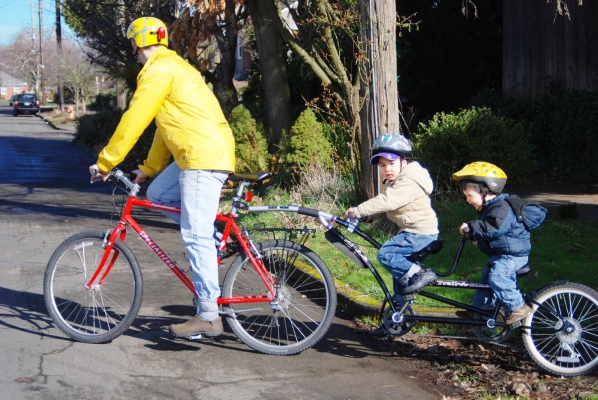Research explores how parents decide on children's transportation to school

Faced with fewer children walking or bicycling to school, governments and other groups have sought to reverse this decline. Even when there's money to address the issue, however, local governments and school districts don’t know how best to spend it to get more children on foot or bicycle.
OTREC researchers Lynn Weigand and Noreen McDonald stepped into this void with their project, “Evaluation of Safe Routes to School Programs: Qualitative and Quantitative Analysis of Parental Decision-Making.” Their final report is now available.
Existing research only scratches the surface of how parents decide which mode their grade school-aged children take to school. Weigand and McDonald explored the decision-making process with focus groups and tested a new Web-based survey to supplement the limited information gained from existing paper surveys.
Focus groups, in particular, can explain motivations more richly than can survey questions, Weigand said. Parents might select a single survey response, for example, to mean drastically different things.
“Parents cite ‘convenience,’ but that means different things to different parents,” Weigand said. “For some, it means it’s more convenient to plop the kid in the car and drive to school.
“Other parents said it’s more convenient to get on their bikes and go to school that way, because they’re going to ride their bike to work afterward,” she said. “Those nuances hadn’t been teased out. It definitely showed to us the value of doing focus groups and qualitative research to fine tune the research.”
The researchers found that parents’ attitudes toward transportation options play a big role in how children get to school. “If they walk and bike themselves, they are more inclined to encourage their kids to walk and bike to school,” Weigand said. “If they’re more auto-centric, they’re they are more likely to drive their children to school and other destinations.”
The research provides insight for those seeking to establish or improve Safe Routes to School programs. Because parents won’t let children use a travel mode the parents aren’t themselves comfortable with, programs should help parents view walking and cycling as feasible. Once they’re comfortable with the choice, Bike or Walk to School Days can be powerful motivators.
Schools with active parental involvement in active transportation programs also had more programs and activities to promote walking and cycling to school, which in turn resulted in higher rates of those travel modes for t he children, the research found.
The research project's use of a Web-based survey and focus groups expands researchers’ insight into parents’ decisions, Weigand said. “Like a lot of other work in a new field, this was intended to start building a body of literature,” she said.
“Other (researchers) can add to it, confirm the findings and move the knowledge forward.”
- Download the report: "Evaluation of Safe Routes to School Programs: Qualitative and Quantitative Analysis of Parental Decision-Making"
- Background on the project is here.
